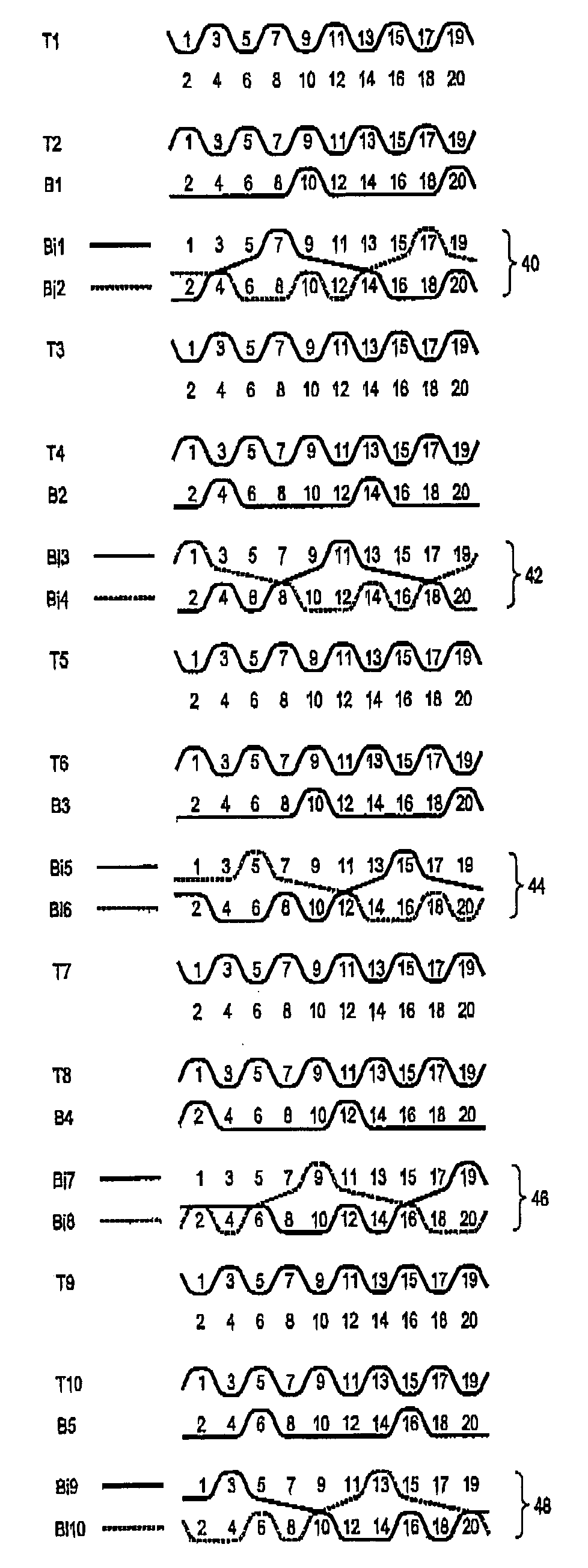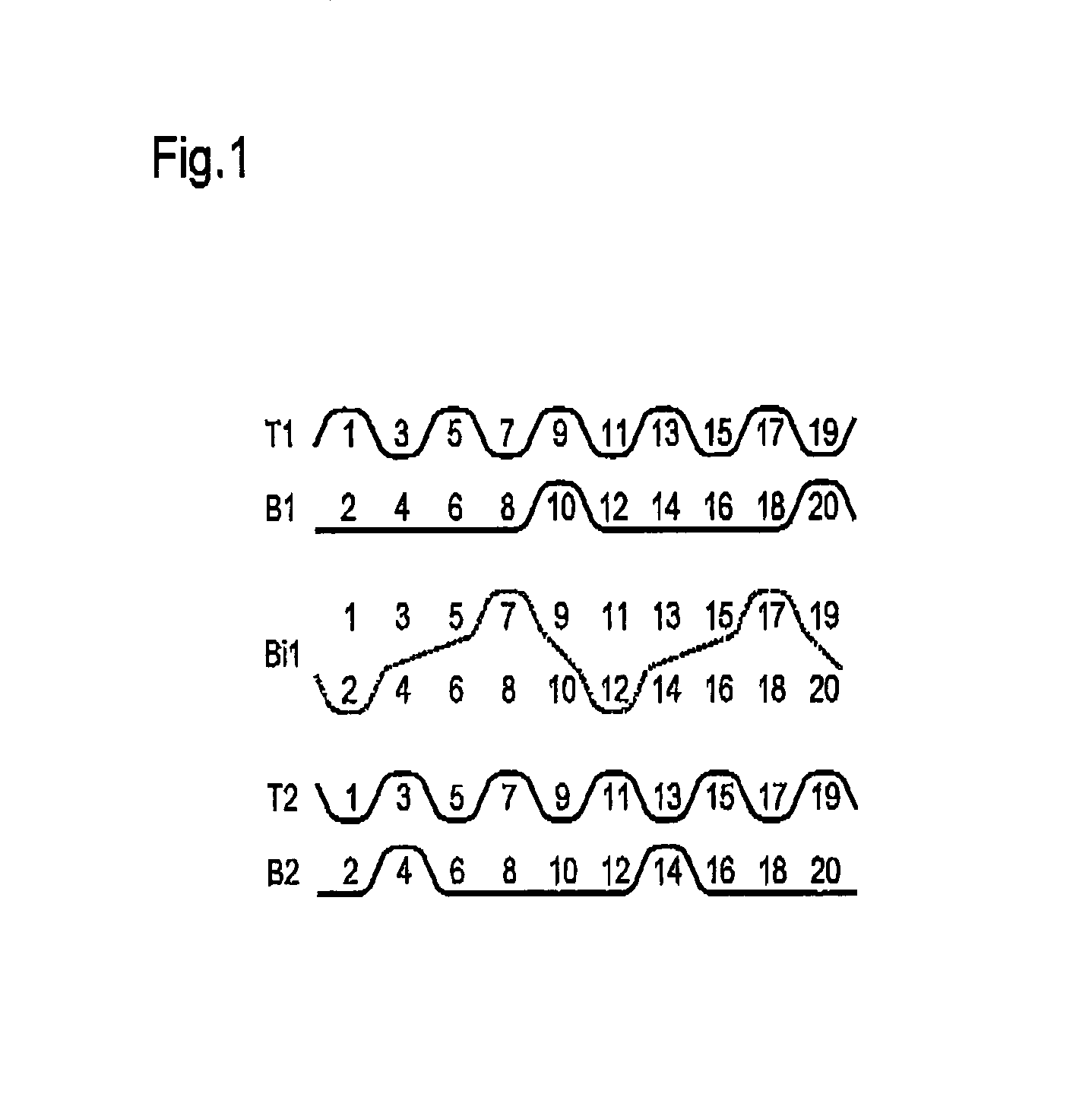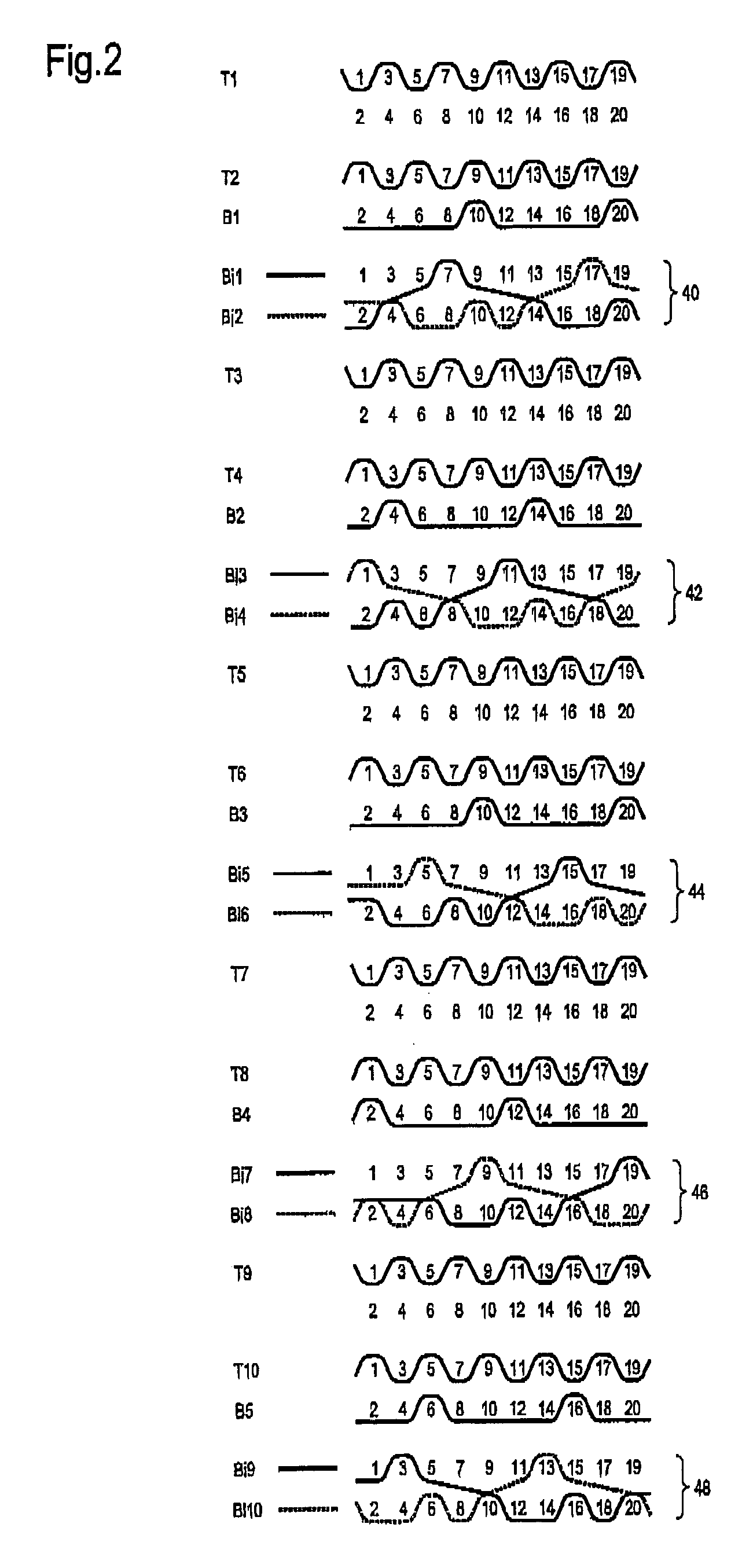Forming fabric
a technology of fabric and web, applied in the field of fabric, can solve the problems of limiting delamination resistance and undesirable basis weight variation in the sheet, and achieve the effects of reducing undesirable basis weight variation, stiffening the composite fabric, and reducing the possibility of forming a recessed area in the paper side fabric surfa
- Summary
- Abstract
- Description
- Claims
- Application Information
AI Technical Summary
Benefits of technology
Problems solved by technology
Method used
Image
Examples
Embodiment Construction
[0035]Referring now to the drawings, and, more particularly to FIG. 1, there is shown a series of weft yarns arranged in accordance with a 20 shaft weave.
[0036]FIG. 1 shows how each of the weft yarns interacts with the twenty warp yarns in the fabric's warp repeat unit. There is a 1:1 paper side to wear side warp ratio, comprising paper side warps 1, 3, 5, 7, 9, 11, 13, 15, 17 and 19, and machine side warps 2, 4, 6, 8, 10, 12, 14, 16, 18, 20.
[0037]The weft yarns fall into three categories. The first set of weft yarns, as exemplified by wefts B1 and B2, bind only with the machine side warps, binding with every fifth wear side warp yarn such that the machine or wear side fabric has a so-called five shaft back. The second set of weft yarns, as exemplified by wefts T1 and T2, bind only with the paper side warps, to each form complete weave repeats in an over-under fashion. Thus, the paper side fabric has a so-called plain weave face.
[0038]The remaining weft Bi1, in FIG. 1, provides a bi...
PUM
 Login to View More
Login to View More Abstract
Description
Claims
Application Information
 Login to View More
Login to View More - R&D
- Intellectual Property
- Life Sciences
- Materials
- Tech Scout
- Unparalleled Data Quality
- Higher Quality Content
- 60% Fewer Hallucinations
Browse by: Latest US Patents, China's latest patents, Technical Efficacy Thesaurus, Application Domain, Technology Topic, Popular Technical Reports.
© 2025 PatSnap. All rights reserved.Legal|Privacy policy|Modern Slavery Act Transparency Statement|Sitemap|About US| Contact US: help@patsnap.com



